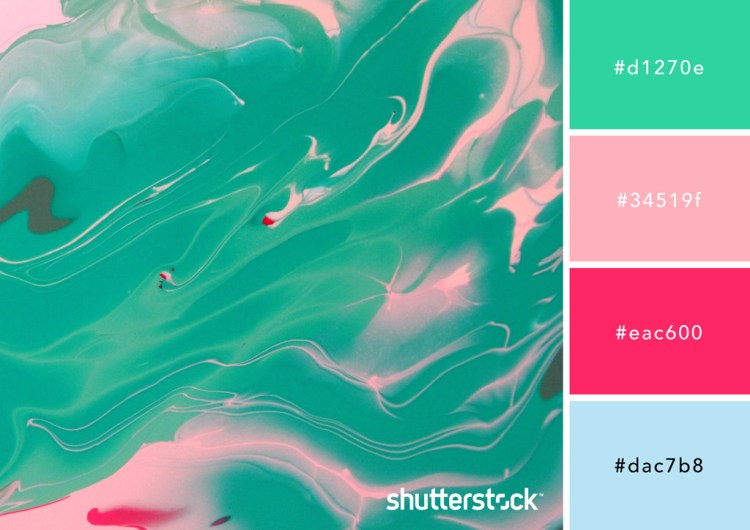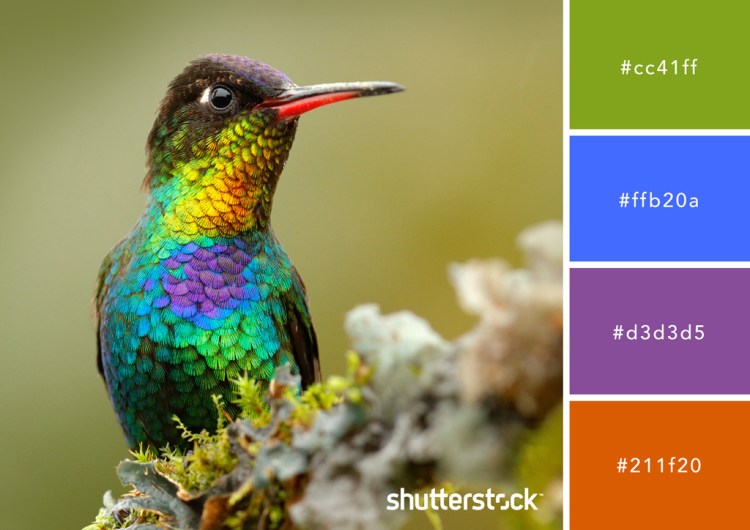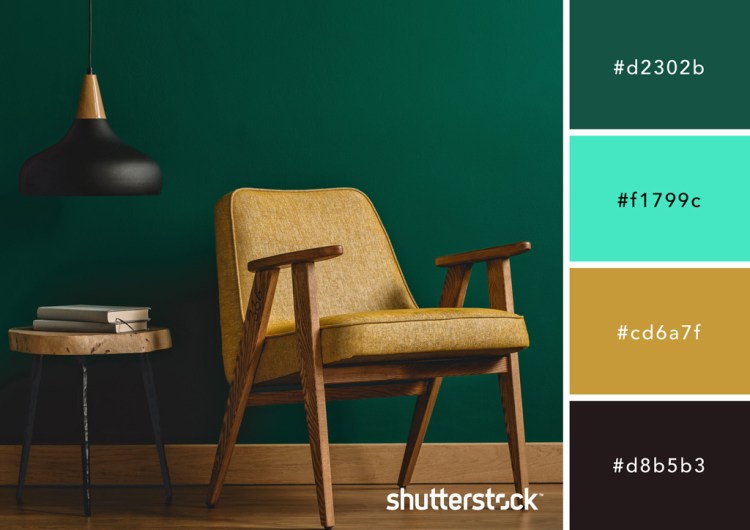Lanter Family, Mixed Race, of Orange Co., Virginia
Discover green's enigmatic symbolism, as well as how to pair with other colors to create a contemporary scheme. Pick up pro tips on how to pattern and decorate using the colour greenish in this consummate guide.
The colour of growth, regeneration, and cleanliness, greenish is intertwined with the natural world and healthy living. Frequently employed by designers to convey ecology ideas or promote health products, greenish is as well associated with cleanliness, luck, and prosperity.
Although psychologically perceived equally a lethargic color, green's links with wellbeing and the environment continue to go far an extremely popular and naturally beautiful colour to use in designs. From emerald to viridian, and olive to aqua, dark-green comes in a huge range of gem-like, leafy, or blue-infused shades. Each one also has their own distinct symbolism and associations.
Skip to the end of the commodity to discover three on-trend light-green color palettes to use in your designs. You can also discover a whole spectrum of incredible colors to use in your designs with our new color tool.
What Colors Make Dark-green?
On the visible spectrum, green sits between blue and yellow. In painting and printing, dark-green is a secondary color, meaning that it is created by mixing two chief colors—xanthous and blue.

In the digital RGB color model, green is an additive primary color, aslope red and blueish. These 3 colors are mixed together to create a full range of screen-friendly colors.
On a painter'southward color wheel, greenish sits next to xanthous on ane side and blue on the other.

Color bike images adjusted from contributor Antun Hirsman
Varieties of Green Colors
Dark-green can vary in both shades (in which the greenish is mixed with black for a darker green) and tints (which are mixed with white, to produce a paler outcome). Just, there are also a broad range of green varieties that are mixed with other colors, such as yellow, blue, greyness, and brown.
- Yellow-greens such equally chartreuse (named afterward the French liquor which shares the distinctive color) and lime green have a lively, energetic experience.
- Blue-greens such as aqua, ocean green, and teal have a more subtle free energy which helps designs to feel calmer and more than chic.
- Gray-greens like seafoam and sage are wintery and more somber than their xanthous- and blue-green relations.
- Brown-greens like dark olive accept a formal and dignified air, which explains why they are often selected for military uniforms.
Explore the diverse world of green with the Shutterstock colour tool, which explores palettes and images related to a range of vivacious and vibrant greens, including mint green, spruce, jade green, and pistachio.
Green'due south Complementary Color
Light-green sits reverse to ruby on the color spectrum, creating the perfect high-contrast pairing of lethargic, calming green with hot-blooded, energizing red.

Color wheel images adapted from contributor Antun Hirsman
The Significant of Green

Maybe because green is so mutual in nature, it is primarily associated with growth, life, free energy, and fertility. Information technology is the most healing and soothing color for the middle to process, and has been proven to enhance vision, stability, and endurance in human viewers.
Dark-green's clan with healing and its proven power to also assistance to alleviate feet and depression explains why it is often chosen to advertise drugs and other medical products.

"Absolute greenish is the nearly restful color, lacking any undertone of joy, grief or passion."
– Wassily Kadinsky, creative person
Compared to divisive blue and passionate cherry-red, greenish is ofttimes perceived as a neutral color, perhaps because throughout human evolution nosotros became used to seeing a large corporeality of green in our daily lives. However, the downside of green's neutrality is that it can go like background noise, with too much light-green tending to promote sluggishness, laziness, and a lack of energy.
Aside from its environmental associations, green has a wide range of other meanings specific to certain cultural uses. For example:
- Green can exist symbolic of practiced luck, money, and prosperity. In Ireland green is the national color and is associated with good fortune. Irish children began the tradition of pinching people who forgot to wear greenish on St. Patrick's Mean solar day and this playful tradition is notwithstanding practiced today.
- Darker shades of green can symbolize greed, appetite, and wealth, which might explicate why dark greens is pop for banking and exclusive or luxury branding.
- Olive green, with its connections to the symbolic olive branch, can be symbolic of peace. But, ironically it is also frequently chosen every bit the colour for military uniforms.
- Green is the celebrated color of Islam, with the color representing the vegetation of Paradise. Dark-green is featured in the flags of virtually all Islamic countries.
- In the late 1800s author Mark Twain wrote nigh a character turning "green with green-eyed," but greenish'south association with jealousy has much deeper roots, stemming back to the Ancient Greeks. The Greeks believed that the body produced too much bile when a person was jealous or sick, giving the skin a greenish tint.

The Origins of Greenish
Green is the most commonly occurring colors in nature, with chlorophyll-producing plants making up a largely green outdoor environment. Many birds, mammals and reptiles followed suit, evolving green colorings to help camouflage themselves in jungle and wood environments.
There are besides minerals that obtain their green coloring from their atomic number 26 or chromium content, such equally emerald, jade, and chlorite. Historically, some of these minerals have been prized as precious stones or jewels, and emerald in particular continues to take significant value today for both its rarity and beauty.
Because greens naturally occur in and are synonymous with nature, item dark-green shades are often associated with specific environments or climates. Hunter green has a rich, melancholic feel reminiscent of evergreen forests, for example, while jungle greenish has a libation blue undertone that mimics the dark-green tint of tropical plants.
Although dark-green is generally associated immediate with plants, some greens originate from chemical reactions. Celadon green is a jade light-green created by applying a thin glaze of iron oxide. In ancient Prc this particular light-green was considered so beautiful that only the optics of royalty could behold it, and it was known as mi se, significant "mysterious colour." The French "celadon" name was after given to this elegant color,. The name is based on the literary character of a French shepherd who wore pale greenish ribbons.

How to Blueprint with Green
Green has been a blueprint favorite for centuries, with the Victorians favoring deep, somber tones like sage and brunswick greenish for their interiors. Many of the chemicals used to create these pigments were in fact extremely poisonous, with the famous example of Napoleon having obviously been slowly poisoned past the arsenic-rich green wallpaper used in his room in St. Helena.
Although the wallpaper has since been proven not to have been the sole cause of his death, deadly pigments did fiddling to dissuade consumers from the joys of green in their homes. Green remained in style in diverse incarnations beyond the Victorian period.
In the 1950s aqua and mint green were paired with babe pinkish to achieve the ideal Americana aesthetic for kitchens and Cadillacs. In the 1970s, avocado became the peak of fashion and enjoyed immense popularity, both gastronomically and in interior blueprint.

Nowadays, green can be used in a wide variety of shades and hues to achieve different stylistic looks for graphic design, interiors, and product design.
Neons are enjoying a huge revival across graphic blueprint, with punchy lime, chartreuse, or other radioactive greens adding a lively juxtaposition to blackness-and-white photography or blazon.
This brand identity past Hamburg-based designer Marco Moccia for Museum Georg Schäfer uses a simple graphic segment of neon green to provide a modernistic foil to classical paintings.


Designing with luxury in listen? Deep, dark greens and their association with wealth make these the perfect ground for creating elegant and refined packaging or branding, every bit in this example past Australian designer Jackie Price for YIVIO Winehouse Branding.
Linking the vino to its bawdy terroir origins with a dark-green brand color is likewise mindful and appropriate. Effort using green in your own designs to create a connection with eco-friendly or organic products.


This brand identity for hypothetical airline Emerald Emirates by Chris Do and Emily Xie for Adobe Alive is a great case of a monochromatic green color scheme (meet below) in action.
Building up shades of aqua and emerald in a gradient-themed style, these designs advise both luxury and the dynamism of air travel. The choice of green is fitting for a brand that wants to convey an impression of both luxury and relaxation.

What Colors Get With Green?
Colors that become with green depend on the type of color scheme you want to use:
- A monochromatic light-green color scheme uses tints, tones, and shades to create an entirely green palette.
- A complementary light-green color scheme incorporates red. Greenish'southward cousins, yellow and blue, are complementary to majestic and orange respectively.
- An coordinating dark-green colour scheme uses the colors bordering green on either side of the colour wheel. In this case, yellow and blueish.
- A triadic greenish colour scheme includes orange and purple since they are equidistant from dark-green on the color wheel.
To find the colors and verbal hex codes that become with green, use our color combinations tool. Information technology shows you monochromatic, coordinating, triadic, and contrasting color palettes for a multifariousness of greens. Endeavour a scheme with mint green, bandbox, jade green, or pistachio.
Beneath, observe iii cut-edge, pre-made color palettes for the colour green.
Palette 1: Seafoam and Pink
This fresh and alluring combination of colors mixes seafoam green with soft pink, magenta, and baby bluish for a lively, on-trend scheme. This palette feels both feminine and enlivening, with a mid-century optimism. This palette would look best on branding and retail interiors that require an energetic, youthful look.

Palette 2: Nature's Jewels
Nature volition always generate the almost beautiful of light-green colour schemes. Hither, the iridescent colors of hummingbird feathers provides the inspiration for a palette of jewel tones of grass green, royal bluish, purple purple, and exuberant orange. This is a rich, earthy palette that volition give your designs a nature-inspired expect with added interest and depth. Perfect for giving logos or typography a lift.

Palette 3: English language Sensibility
This palette is inspired past the deep bottle green and traditional racing greenish favored by 1940s and 1950s designers. This dark, intellectual dark-green makes the perfect teammate for aquamarine and antique aureate. Restrained and elegant, this is a palette that is suited to projects that require a touch on of formality and luxury, such as hotel interiors or high-end packaging design.

Eager to discover more incredible colors to use in your designs?
Notice a whole spectrum of incredible colors with our new colour tool. Bring your projects to life.
Cover image via merrymuu
littletonwheme1992.blogspot.com
Source: https://www.shutterstock.com/blog/green-color-schemes-meaning
0 Response to "Lanter Family, Mixed Race, of Orange Co., Virginia"
Post a Comment